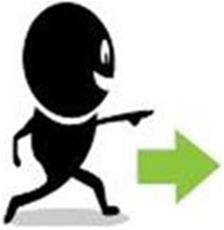Microsoft in Education Global Forum, Dubai, 2...
0 comments
 0
0 
Thank you Chris, this is really a timely post on Braille and Imagination! Not only to begin the planning for next year’s celebration of Blind Americans Equality Day, but we were just speaking with a teammate about what options are available in using embossers for making graphics more accessible for individuals with vision impairments or who are blind.
Now is the time for community leaders, educators, librarians, and Americans across the country to begin collaborating and making plans to celebrate with ceremonies, activities, and programs for Blind Americans Equality Day on October 15th, 2014.
It is also a great time to think global! You won't want to miss this global celebration, World Sight Day | International Agency for the Prevention of Blindness is an annual day of awareness held on the second Thursday of October, to focus global attention on blindness and vision impairment. More information can be found at (http://www.iapb.org/advocacy/world-sight-day).
Explore our links below that share more information on historical events, timelines, and making graphics more accessible for individuals with vision impairments or blindness.
Description Timeline http://www.dcmp.org/ai/193 More than 60 years ago the importance of description and how it played an important role in Accessibility, with the last event being a webinar on how you can make accessibility happen! This timeline was created by the Described and Captioned Media Program at http://www.dcmp.org/
Guide Dogs for the Blind Historical Timeline http://bit.ly/guidedogs_timeline Starting in 1927 when the concept of using dogs as guides for people who are blind was featured in an article in The Saturday Evening Post, through 2005 when the White House honored veterans who were blind.
Research to Prevent Blindness Timeline http://bit.ly/rpb_timeline The Research to Prevent Blindness timeline, beginning in 1960. The mission of this voluntary health organization is to support research directed at the prevention, treatment, and cure for diseases that threaten vision.
The National Consortium on Leadership and Disability for Youth (NCLD/Y) http://bit.ly/ncld_timeline This timeline is designed to assist youth with and without disabilities to learn about the rich history of people with disabilities. It features examples of the remarkable diversity, creativity, and leadership that have shaped the disability community and American culture. This is a new resource for the growing national movement to have disability history taught in the public schools and community-based organizations.
Creating accessible graphics can be challenging. Perhaps some of you may be looking at options for working with graphics as well. We found that the best advice if you already own an embosser is to check with the manufacturer to explore if software is available for working with graphics. In addition, there is software available to work with Braille Translation software. One that comes to mind is the QuickTac Beta software for Duxbury (Open beta test of QuickTac4.0) which uses the embossing engine of Duxbury (DBT) to create graphics, available at http://bit.ly/quicktac
If you have not yet purchased an embosser, ask the manufacturers/vendors about the specifics of their models and capabilities to emboss graphics. If you have a high volume of graphics that will need to be embossed, you may want to consider Graphic Tactile Embossers designed specifically for embossing graphics and maps.
Another great resource is the Guidelines and Standards for Tactile Graphics at http://brailleauthority.org/tg/web-manual
Share with us! Post a comment about your ideas in celebrating Blind Americans Equality Day on October 15th, 2014 or resources that you use for making graphics more accessible.